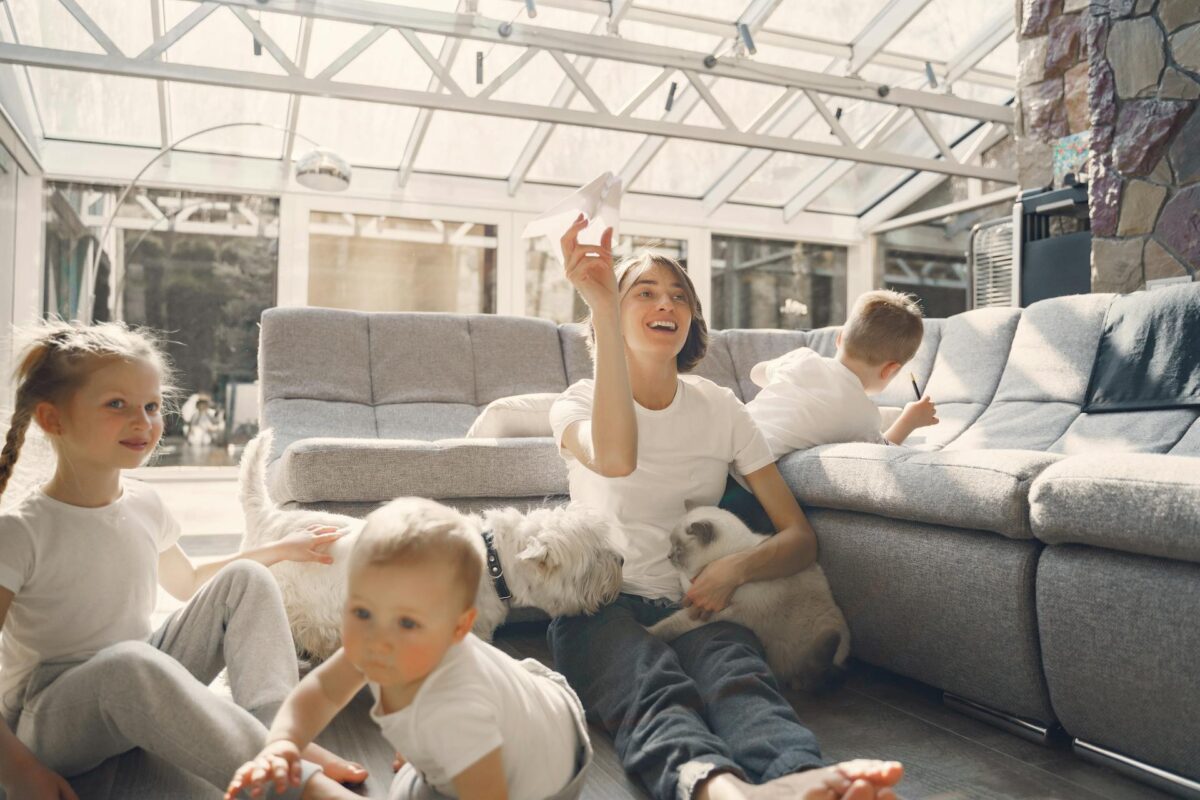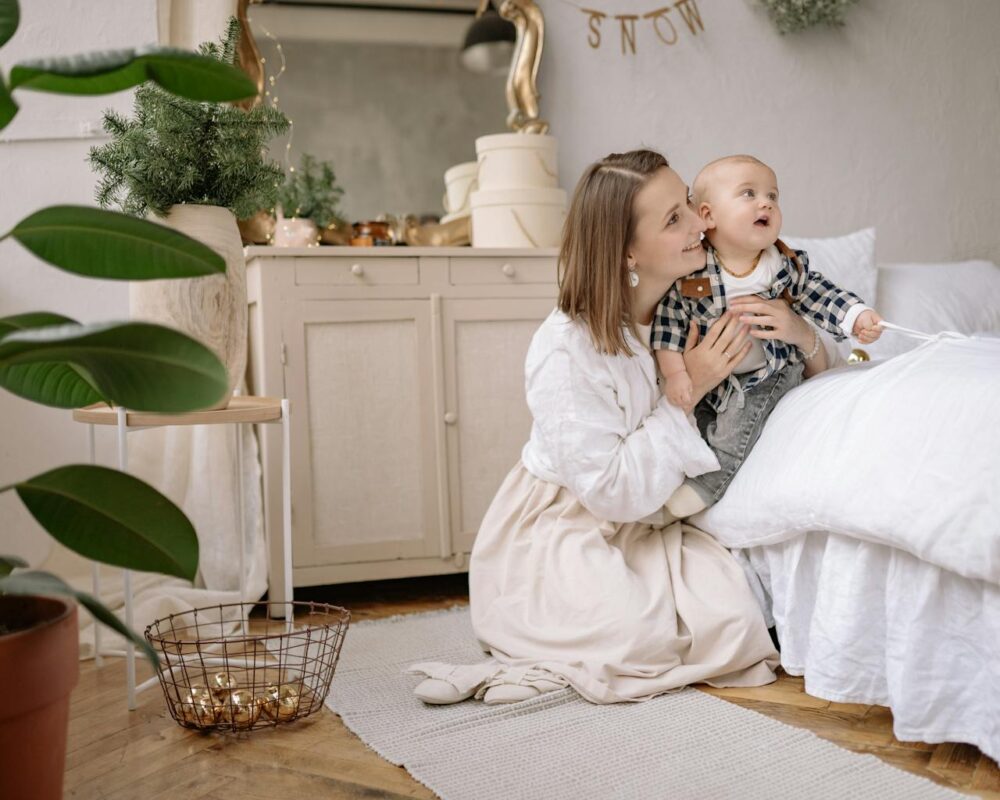It is important to create a space that is both functional and safe for children in any family-oriented home. Explore the concept of a kid-friendly interior that balances safety with imaginative design. We will cover how to design a kid-friendly interior using creative yet practical solutions. These approaches cater to children’s lively nature while ensuring their well-being and comfort. This guide aims to inspire parents to craft a space where kids can thrive, and parents can relax.
Create Engaging and Stimulating Spaces
Colors and shapes play a significant role in child development, stimulating both creativity and learning. Bright, vibrant colors can energize a room and inspire activity, while softer tones tend to soothe and calm. Similarly, incorporating a variety of shapes helps children recognize and categorize visual information from an early age. To harness these benefits, consider designing thematic rooms that spark the imagination.
For example, consider a jungle-themed room adorned with rich greens and animal shapes. Alternatively, you could opt for a space-themed area with stars and planets. Another option is an underwater adventure filled with blues and oceanic forms. Educational wallpapers or murals can also serve as decor and a learning tool. Murals with maps, historical figures, or alphabet designs are excellent for creating an engaging environment that also educates. Each element combines to form a stimulating space that encourages learning through play and exploration.
Multi-Functional Furniture
Multi-functional furniture offers tremendous benefits, especially in terms of storage and usability. These versatile pieces adapt to various needs, which proves particularly useful in a child’s evolving space. Examples include convertible cribs that transform into toddler beds and desks with adjustable heights to accommodate growing children. You can also easily store foldable play mats when not in use.
Such furniture is smart because it grows with the child. This reduces the need to frequently purchase new items, saving both space and costs in the long term. This adaptability makes multi-functional furniture an excellent choice for families. It helps create a practical, long-lasting, and clutter-free environment in their homes.

Design a kid-friendly interior with multi-functional furniture that saves space and cost and adapts to growing children’s needs.
Easy-to-Clean Surfaces and Fabrics
Choosing the right materials for your kid-friendly space is necessary for easy cleaning and maintenance. Kid-friendly materials like washable paints make it easy to wipe down inevitable wall scribbles. Similarly, stain-resistant fabrics withstand spills and stains, simplifying laundry days. Materials such as microfiber or treated leather are ideal for upholstery and curtains. They resist dirt and are easy to maintain.
To keep the space tidy, develop a cleaning routine that includes daily quick sweeps and weekly deeper cleans using safe, non-toxic cleaning products. Moreover, placing washable mats under dining or play areas helps catch spills. These mats are easy to clean by simply throwing them in the wash. These strategies ensure a clean, hygienic environment where children can play and explore without restraint.
Storage Solutions That Kids Can Use
Accessible storage is important for children as it allows them to easily reach their toys and belongings. Implementing low shelving, clear bins, and labels with pictures enables kids to identify and access their items without assistance. This setup promotes independence and encourages children to tidy up after themselves.
Children learn to organize when their items have designated places, clearly marked with pictorial labels. This teaches them to return items to their appropriate places. Besides, this method helps instill a sense of responsibility and order from an early age. Creating a child-friendly storage system fosters organizational skills effectively. It also keeps the play area neat and inviting.
If you need temporary storage while decorating your home to meet your children’s needs, consider Booska Movers. A family-owned business moving others since 1946 offers flexible storage options to keep your belongings safe and out of the way during the organization process.

Accessible storage promotes children’s independence and organizational skills by easily accessing and identifying their belongings.
Incorporating Play Areas in Small Spaces
When attempting to design a kid-friendly interior, integrating play areas in small spaces requires creative solutions to maximize the available area. One effective strategy involves using fold-away furniture, such as Murphy beds or collapsible play tables. You can stow these items away when not in use. Multi-use items, like benches that convert into sandboxes, also enhance space efficiency. You can quickly assemble or dismantle these play areas, ensuring the home remains versatile and adaptable to various needs.
In addition, using vertical space for storage can free up the floor area for play without cluttering the room. Implementing these strategies can transform even the smallest spaces into fun and functional play areas. These areas encourage creativity and play without compromising the overall utility of the home. This approach maximizes space while keeping the home organized and available for other activities.
Safety and Allergy Management
Safety and health are at the forefront of designing kid-friendly interiors, ensuring every part of the home supports the well-being of children. Choosing materials that are both safe and durable is essential. Incorporating soft, rounded furniture helps protect against injuries from sharp corners. Installing safety covers on all electrical outlets prevents electrical accidents. Additionally, placing non-slip rugs and securely anchoring furniture helps minimize the risk of slips and falls. This is especially important in high-traffic areas.
For families with allergy sufferers, creating a clean, allergen-free environment is vital. Selecting hypoallergenic materials can significantly improve air quality. Using air purifiers also makes the space safer for children with sensitivities. To keep allergens like dust and pet dander under control, you must perform regular cleaning and maintenance. Integrating these safety and health measures helps parents ensure their home is secure. It also creates an environment conducive to the health and well-being of their children.

Safety and health measures in home design protect children and support their well-being by preventing accidents and reducing allergens.
Design a Kid-Friendly Interior: Your Blueprint for a Kid-Friendly Home
In conclusion, designing a kid-friendly interior involves prioritizing safety and incorporating engaging elements. It also requires choosing materials that are both easy to clean and allergy-friendly. Functional furniture and clever storage solutions enhance the space’s utility while fostering a tidy environment. Design a kid-friendly interior by blending functionality with fun, ensuring children’s spaces are stimulating and secure.
Author bio:

Sophia Hart is an accomplished copywriter with over ten years of experience at Booska Movers. She specializes in creating engaging content that connects with audiences and drives brand success. Known for her precise and strategic writing, Sophia delivers exceptional quality under pressure. In her free time, she enjoys literature, cooking, and nature.
